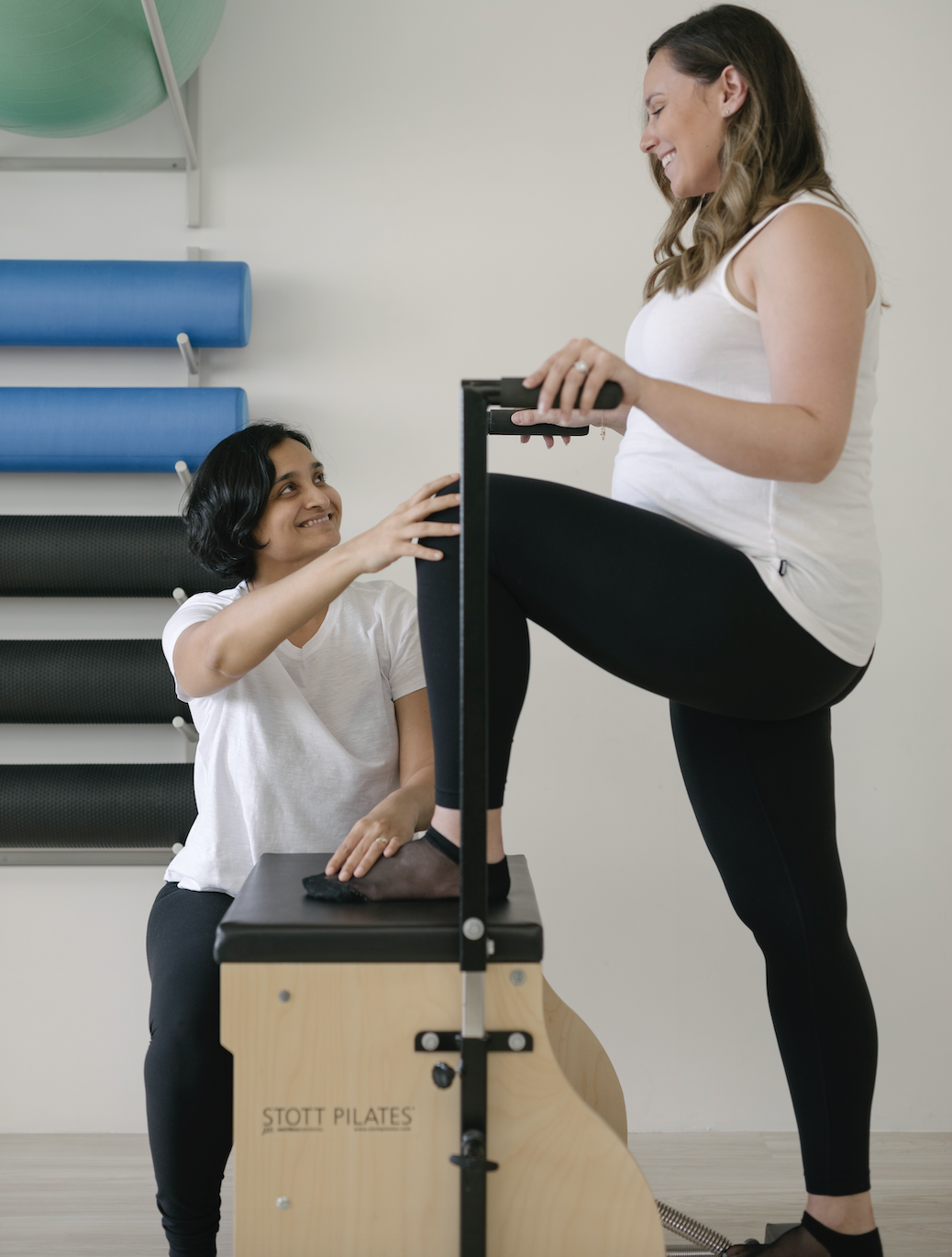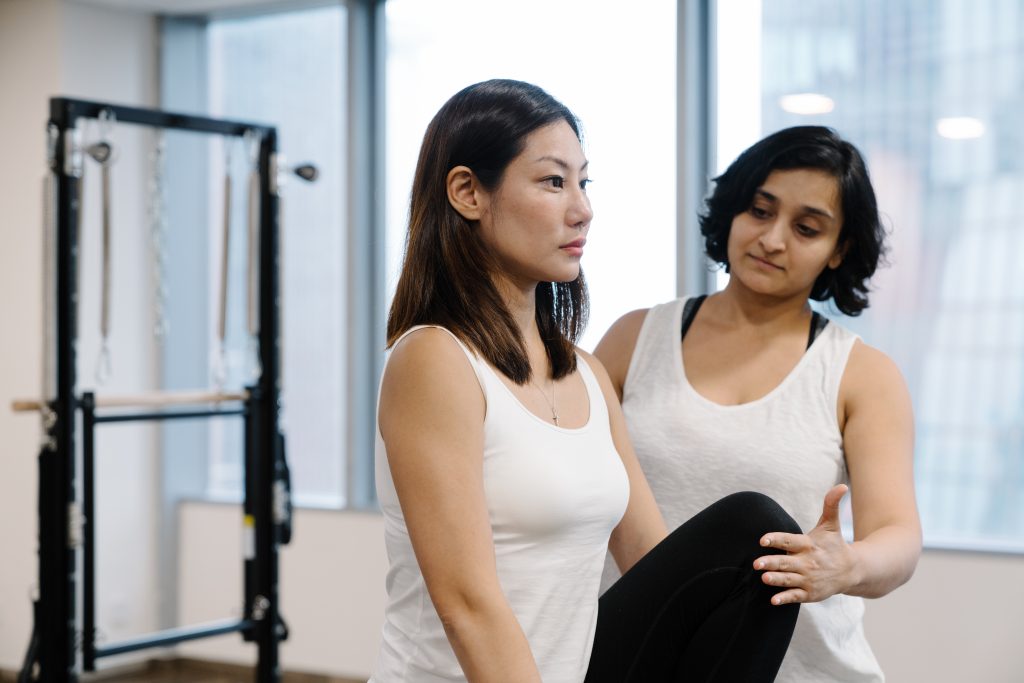Phase 1 post circuit breaker, we are able to see our rehab/clinical Pilates clients again. As senior instructor, with a specialty in rehab and who leads the rehab team, you’re the best person to tell us a bit more about clinical Pilates!
What is the difference between Clinical Pilates and normal Pilates?
Pilates, as a whole, is a form of exercise and is hugely beneficial for the larger population and is widely used in the rehab space, with focus on stability and control. Pilates is almost synonymous with rehab and core training. It is suitable for everyone, and can be used in rehabilitation, performance optimisation or even just for general fitness. Clinical Pilates differs from normal Pilates in that it has to be done under the supervision of a Health Professional, such as a physiotherapist or doctor.
Walk us through the process from start to end when a new client comes in for clinical Pilates
All clients that come in for clinical Pilates go through the same stages. These stages are:
- Client History : Find out the how, where, what and when of injury, surgery or condition and ensure has be okayed for exercise by specialist/ physio ) GP etc
- Understand Client Goals at start of session and agree on expectations or reset expectations at end of session
- Assess Range Of Motion or lack thereof if applicable
- Assess Strength: muscle strength and length test or movement test whichever fits w client story
- Exercise In Pain-Free Range In Studio
- Home Exercise Program give client home exercise program and follow up on client one day post session
- Follow Up with referring doctor/allied health professional to report on the plan or progress of the client
If symptoms get worse or do not get resolved in a set timeline, we recommend getting a second opinion from a peer or send back to referring health professional.
What kind of cases do you see?
I am very lucky and rarely bored because I get to see a wide variety of cases. Most common cases I see include lower back and neck pain (strains, sprains, disc issues or post-surgery), prenatal clients with pregnancy associated aches and pains, postpartum clients with diastasis recti and back pain, post-operation or prehab knee (ACL or Meniscus injuries) and shoulder pain (frozen or rotator cuff injuries or lack of flexibility).
How do you work with the physiotherapist as part of a multi disciplinary team. What’s the communication like to make sure that patient is cared for holistically?
There is very tight and specific communication we have established to follow and track progress and success for each patient. Timely communication within the team and also with our clients plays a very big role in client recovery and meeting client goals.
We have daily and weekly case discussion meetings with the team and also physiotherapist or peer supervised sessions to ensure we are on top of our game.
What is your favourite thing about Pilates?
The versatility of the exercises, the universal application of the basic principles of Pilates across all activities we do in life, the specificity of the training and the use of the wonderful equipment which we are lucky to have at our studios!
What is the best exercise for a good back stretch after a long day at the office?
On oldie but a goodie is the seated or standing against wall roll down (provided no pain or contraindicated).
What has been your best success story? What was the issue, how often did they train and what were the results?
I have been lucky to work with dedicated clients and my favourite story is about a mum who had to care for her child with a disability and had severe back pain. Her goal was very clear, to be able to carry and support her child in his daily function.
We trained her twice a week (with home exercises of course) over 4 months. Her exercise routine included core stability, hip mobility, strength training and upper body and abdominal strength, lifting techniques and balance to carry about 35 kilos. Three members on our team worked with her and she left us with no pain and confidence to care for her child! She has an exercise plan that lasts her a lifetime that she can continue to practise at home.
 Whatsapp
Whatsapp





